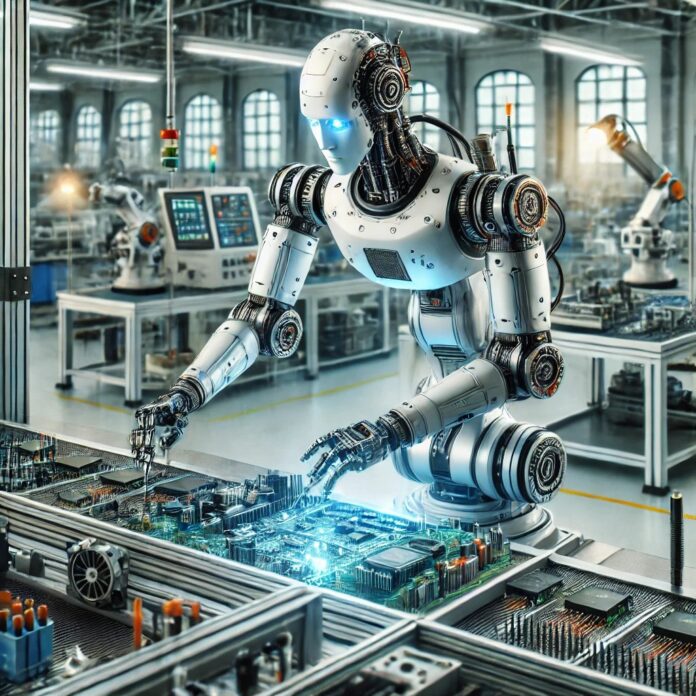Introduction to Robotics
Robotics is a rapidly advancing field that is transforming industries and everyday life. From manufacturing and healthcare to entertainment and domestic chores, robots are becoming integral to our world. This article explores the fascinating realm of robotics, delving into its history, current applications, and future potential.
History of Robotics
Robotics has a rich history that dates back centuries. The concept, but it was in the 20th century that robotics began to take a tangible form. The term “robot” was coined by Czech writer Karel Čapek in his 1920 play “R.U.R.” (Rossum’s Universal Robots). Early robots were simple, programmable machines designed for specific tasks. Over the decades, advancements in technology have enabled the creation of more sophisticated robots capable of performing complex functions.
Types of Robots
Robots can be categorized based and application areas. Here are some of the main types:
- Industrial Robots: These are widely used in manufacturing and assembly lines. They perform repetitive tasks with precision and speed, enhancing productivity and safety.
- Service Robots: Designed to assist humans in various environments in healthcare, hospitality, and domestic settings. Examples include robotic nurses and vacuum cleaners.
- Humanoid Robots: These robots mimic human appearance and movements. They are used in research, entertainment, and as companions for elderly or disabled individuals.
- Autonomous Robots: These robots operate independently without human intervention. Examples include drones and self-driving cars.
Applications of Robotics
Robotics technology is making significant impacts across numerous sectors:
- Manufacturing: Robotics in manufacturing has revolutionized production processes. Robots are used for tasks such as welding, painting, assembly, and packaging. They increase efficiency, reduce errors, and improve safety by handling hazardous tasks.
- Healthcare: In healthcare, robots assist in surgeries, rehabilitation, and patient care. Surgical robots enable minimally invasive procedures, resulting in faster recovery times and reduced risk of infection.
- Agriculture: Agricultural robots automate tasks like planting, harvesting, and monitoring crop health. They enhance productivity and precision farming techniques, leading to higher yields and sustainable practices.
- Logistics and Supply Chain: Robots streamline logistics by automating sorting, packaging, and delivery processes. Warehouse robots, for instance, enhance inventory management and order fulfillment.
- Entertainment and Leisure: Robotics has a growing presence in entertainment. Robots perform in theme parks, assist in filming, and create immersive experiences in gaming and virtual reality.
Advancements in Robotics Technology

Robotics technology is continuously evolving, driven by advancements in artificial intelligence (AI), machine learning, and sensor technology. Some key developments include:
- AI Integration: AI enhances robots’ capabilities by enabling them to learn from experience, adapt to new situations, and make decisions. This makes robots more autonomous and efficient in performing tasks.
- Collaborative Robots (Cobots): Cobots are designed to work alongside humans, complementing their abilities and improving productivity. They are equipped with sensors and safety features to ensure safe interactions.
- Enhanced Mobility: Advances in mobility technologies and improved wheels, enable robots to navigate complex environments with ease. This expands their application potential in various industries.
- Advanced Sensors: Modern robots are equipped with advanced sensors that provide them with better perception and awareness of their surroundings. This allows for precise manipulation and interaction with objects.
Future of Robotics
The future of robotics holds immense promise. As technology continues to advance, robots will become even more integrated into our daily lives. Some anticipated trends include:
- Personal Robots: Robots designed for personal use will become more common, assisting with household chores, healthcare monitoring, and companionship.
- Smart Cities: Robotics will play a crucial role in the development of smart cities, enhancing urban living through automated transportation, waste management, and security systems.
- Space Exploration: Robotics will be pivotal in space exploration missions. Robots will assist in building habitats on other planets, conducting research, and performing maintenance tasks in space.
Conclusion
Robotics is a dynamic and transformative field with the potential to revolutionize various aspects of our lives. From enhancing industrial processes to providing personal assistance, robots are becoming indispensable. As technology continues to advance, the possibilities for robotics are boundless, promising a future where robots will play an integral role in shaping our world.



